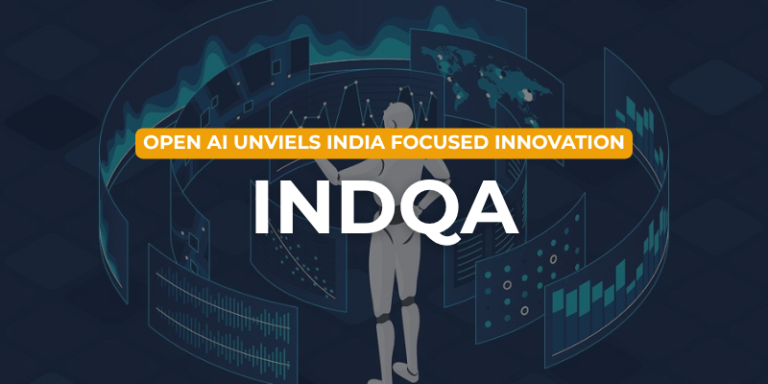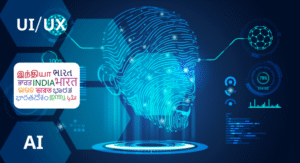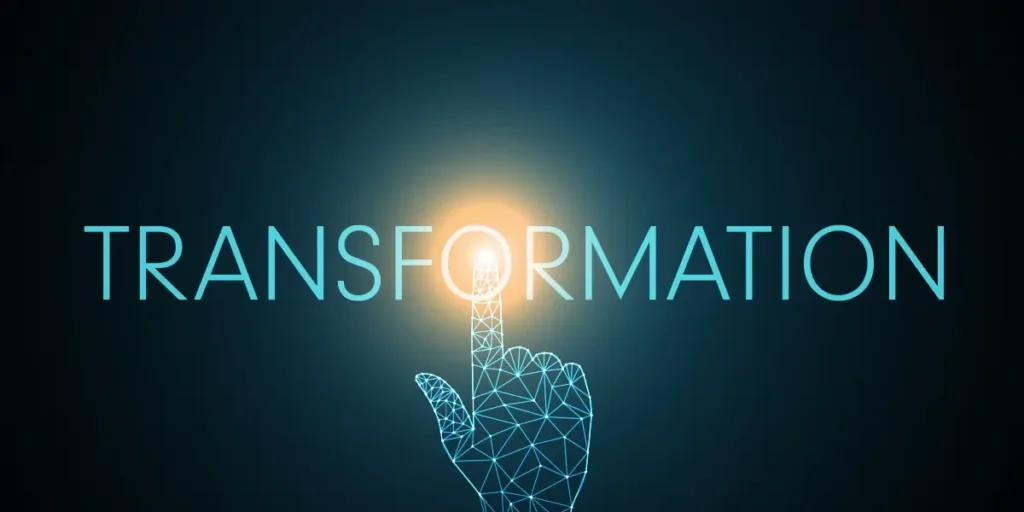OpenAI Introduces IndQA: A Cultural-Reasoning Benchmark for India’s Languages
TL;DR
OpenAI has launched IndQA, a new benchmark that evaluates how well AI systems understand and reason about Indian languages, culture, and everyday life. Built with 2,278 expert-authored questions across 12 Indian languages and 10 cultural domains, IndQA is designed to probe culturally nuanced, reasoning-heavy tasks that broader academic benchmarks tend to miss. It was created with the help of 261 domain experts from across India. OpenAI
Why IndQA Matters
The rapid adoption of AI in India—fueled by a massive, mobile-first internet population and an explosion of Indic-language content—has exposed a critical gap: many models do well on global academic or encyclopedic tests but struggle with local nuance, idiomatic expression, regional context, and culturally specific reasoning. India’s linguistic diversity (with dozens of major languages and hundreds of dialects) makes this gap especially visible.
IndQA directly targets that problem. Instead of measuring rote recall or formulaic reasoning, it evaluates context-aware understanding: can a model track regional references, apply commonsense grounded in Indian daily life, and produce accurate answers across different scripts and linguistic registers? By pushing on cultural fidelity and reasoning, IndQA gives developers and researchers a sharper tool to diagnose where their models fall short—and where to invest to improve. OpenAI
What Exactly Is in IndQA?
OpenAI’s overview highlights several key design elements: OpenAI
-
Scope & Size: 2,278 questions, each crafted to elicit reasoning tied to India’s cultural and everyday contexts rather than just factual lookup.
-
Linguistic Coverage: 12 Indian languages (and multiple scripts), reflecting real usage and diversity.
-
Cultural Breadth: 10 domains—including food, festivals, geography, civics, health, and daily-life scenarios.
-
Expert Sourcing: 261 domain experts across India co-created and reviewed the items, raising quality and reducing bias.
-
Benchmark Intent: Unlike well-known evaluations such as MMLU (broad knowledge) or MGSM (math/logic), IndQA is tuned for cultural nuance + reasoning, complementing rather than replacing those global tests.
Early press and explainers have also framed IndQA as OpenAI’s first cultural benchmark, starting with Indian languages and potentially setting a template for other regions. That framing signals a local-first evaluation strategy that could ripple across Indic LLMs and regional AI ecosystems. adda247+1
The Gap It Aims to Close
Traditional leaderboards often favor high-resource English or a narrow slice of high-resource languages. As a result:
-
Idioms & Pragmatics: Models may translate literally but miss layered meanings or politeness strategies embedded in Indian languages.
-
Local Knowledge: Public transit norms, regional food ingredients, school or government workflows—these can stump models trained mainly on global/Western corpora.
-
Script & Orthography: Multiple scripts (e.g., Devanagari, Bengali-Assamese, Gurmukhi) and spelling variants can degrade accuracy if tokenization and pretraining data are weak.
-
Code-Mixing: Everyday Indian discourse often blends English with the local language. Handling these Hinglish-style patterns is still inconsistent across models.
By centering tasks that require cultural awareness + reasoning, IndQA makes it much easier to see these weaknesses and measure progress. OpenAI
How IndQA Is Different from Existing Benchmarks
-
From Broad to Local: Where MMLU evaluates broad world knowledge, IndQA pinpoints Indian contexts that often fall through the cracks.
-
From Correctness to Appropriateness: Answers must be contextually appropriate—what’s “right” in one cultural setting can be misleading in another.
-
From Facts to Application: Many items demand applied reasoning (e.g., interpreting a social situation, navigating a civic process, or choosing a culturally correct alternative).
In other words, IndQA complements global benchmarks by focusing on what it means for AI to be useful and respectful in India—not just correct in the abstract. OpenAI
Who Benefits from IndQA?
1) Indian Users and Organizations
Banks, health providers, edtech platforms, and customer-service teams that operate in multiple Indian languages get a better way to vet language coverage, tone, and reliability—before deploying AI at scale. This is vital in high-stakes contexts like healthcare triage, financial guidance, or public services. (OpenAI has highlighted India-focused deployments in critical-care and consumer apps, underscoring the need for robust local performance.) OpenAI+1
2) Indic LLM Developers
Startups and research labs building Indic-first models can use IndQA to benchmark progress, surface systematic errors, and tune training data. This helps close the quality gap with large, generalist models and justifies investment in regional datasets and instruction tuning. Early coverage in Indian tech media underscores the ecosystem’s interest in closing this gap. The Indian Express+1
3) Global AI Community
For the broader AI world, IndQA is a proof of concept: culturally grounded benchmarks are not edge cases—they are central to deploying AI fairly and safely worldwide. Similar frameworks could emerge for other regions and language families.
Potential Use Cases and Evaluation Patterns
-
Customer Support in Regional Languages: Test whether an assistant can handle billing issues, delivery disputes, or policy explanations in natural Hindi, Tamil, Bengali, Marathi, Telugu, etc., including code-mixed queries.
-
Civic and Administrative Queries: Evaluate if the model explains pan-India and state-specific processes (ID documentation, local taxes, transport norms) accurately and politely.
-
Healthcare Triage & Guidance: While not a substitute for professional advice, systems can be evaluated on clear, culturally aware instructions (e.g., diet guidance that uses local staples).
-
Education & Career Guidance: Check if models give region-specific scholarship info, exam formats, or vocational pathways without defaulting to US/EU examples.
-
Media & Creative Assistants: Gauge how well models generate culturally authentic copy—festival greetings, scripts, or campaign lines—without stereotypes.
IndQA’s expert-authored tasks should expose whether models truly grasp local context, or if they only parrot translations. OpenAI
What Good Performance Should Look Like
-
Accurate, Context-Rich Answers: Not just correct facts, but explanations grounded in local norms, references, and terminology.
-
Register and Politeness: Appropriate tone for formal vs informal settings; sensitivity around festivals, religion, and regional identity.
-
Robustness to Code-Mixing: Competent handling of Hinglish or similar blends; resilience to spelling variation and transliteration.
-
Script Mastery: Consistent comprehension/production across scripts and fonts; minimal degradation across device inputs.
-
Bias and Stereotype Avoidance: Factual, empathetic, and non-stereotyped outputs in culturally sensitive topics.
How Teams Can Integrate IndQA into Their Workflow
-
Baseline and Gap Analysis: Run your latest model checkpoint against IndQA to get a baseline. Identify systematic errors by language, domain, and question type.
-
Data Curation & Instruction Tuning: Add high-quality, licensed Indic content and human-written instructions, prioritizing domains where the model is weak.
-
Augment with Retrieval: Couple the model with retrieval systems that index trusted Indian datasets (government portals, vetted news, and regional knowledge bases) to reduce hallucination and bring answers into local context. Useful sources include India’s open data portals and curated datasets. Kaggle+3Data.gov.in+3National Government Services Portal+3
-
Human-in-the-Loop QA: Partner with native speakers and domain experts for red-teaming and iterative evaluation.
-
Multimodal Considerations: If your product involves images or documents (IDs, forms, menus), ensure OCR/tokenization supports local scripts and test end-to-end performance.
-
Continuous Monitoring: Local usage evolves quickly—slang, policies, and services change. Build periodic re-evaluation cycles with IndQA to avoid model drift.
Limitations and Responsible Use
-
Not a Full Safety Audit: IndQA is about cultural reasoning and knowledge, not an exhaustive safety test. Teams still need separate audits for toxicity, misinformation, and harms.
-
Representation vs. Exhaustiveness: India’s diversity is enormous; 12 languages and 10 domains are a strong start but cannot cover everything. Treat IndQA as a living signal, not a final arbiter. OpenAI
-
Benchmark Overfitting: Avoid optimizing purely for leaderboard gains. Maintain held-out evaluations and real-user testing.
-
Dynamic Contexts: Regulations, civic workflows, and public services change over time. Pair IndQA with fresh retrieval from official portals to keep outputs current. Data.gov.in+1
Ecosystem Impact: What This Means for India in 2025
India’s AI momentum is at an all-time high, with soaring user adoption and an expanding developer base. A culturally grounded benchmark from a leading AI lab signals a shift: localization isn’t a nice-to-have; it’s core to product quality. Early reporting frames IndQA as a way to help Indic LLMs close the gap with frontier systems by focusing improvements where users feel them most—language comfort and cultural accuracy. Business Standard+1
This move aligns with broader trends: OpenAI’s visible interest in India, local partnerships, and initiatives that highlight Indian deployments and success stories. As competition intensifies, benchmarks like IndQA will likely become table stakes for any model claiming to serve Indian users well. OpenAI+3Reuters+3The Times of India+3
Practical Tips for Teams Targeting Indic Markets
-
Design for Code-Mixing: Train on and test with realistic mixes (e.g., Hinglish) and non-standard spellings.
-
Script-Aware Tokenization: Ensure tokenizers treat Devanagari, Bengali-Assamese, Gujarati, Gurmukhi, Kannada, Malayalam, Oriya, Tamil, Telugu, etc., with minimal fragmentation.
-
Localized Evaluation Cadence: Combine IndQA with task-level KPIs for your product (e.g., first-contact resolution in Punjabi call centers).
-
Citations & Sources: For factual answers, cite Indian sources and provide links to official data—it improves trust and auditability. Consider integrating Open Government Data APIs. Data.gov.in+1
-
Guardrails for Sensitivity: Co-develop style guides with native speakers (politeness, honorifics, taboos). Bake these into system prompts and post-processing classifiers.
Looking Ahead: From IndQA to Global Cultural Benchmarks
IndQA is likely the first step in a broader movement toward regionally grounded evaluation. Expect:
-
More Languages & Domains: Expansion across additional Indian languages and deeper cultural domains (e.g., law, agriculture, regional history).
-
Task Variants: Conversational, retrieval-augmented, and multimodal variants (documents, forms, images).
-
Community Co-Creation: Increasing collaboration with Indian universities, startups, and public-sector bodies to continuously refresh the benchmark and align it to real-world needs.
-
Globalization of the Template: Spin-offs for other regions—South and Southeast Asia, the Middle East, Africa, and Latin America—where cultural fidelity is equally critical.
Conclusion
With IndQA, OpenAI places cultural understanding at the heart of evaluation for India’s languages and contexts. For builders, it’s both a mirror and a map: a mirror that reflects today’s limitations in cultural reasoning, and a map that guides targeted improvements—data, training, retrieval, and human evaluation—toward AI that truly works for Indian users.
If you’re shipping AI for India in 2025, adding IndQA to your evaluation toolbox isn’t optional—it’s essential. OpenAI
References
-
OpenAI — Introducing IndQA (overview and design details). OpenAI
-
Indian Express — Can OpenAI’s new ‘IndQA’ benchmark help Indic LLMs close the gap? (context & implications). The Indian Express
-
GKToday / Adda247 Current Affairs — IndQA: OpenAI’s First Cultural Benchmark Begins with Indian Languages (news coverage). GKToday+1
-
Business Standard — India’s AI adoption momentum (market context). Business Standard
-
OpenAI — CRED case study, 10BedICU (India deployments and localization examples). OpenAI+1
-
Government/open data portals for retrieval & grounding: data.gov.in, NDAP, MoSPI, Kaggle India tag (for curated datasets). Kaggle+3Data.gov.in+3ndap.niti.gov.in+3
For quick updates, follow our whatsapp –https://whatsapp.com/channel/0029VbAabEC11ulGy0ZwRi3j
https://bitsofall.com/build-interactive-real-time-visualization-dashboard-bokeh-javascript/
Comparing the Top 7 Large Language Models (LLMs/Systems) for Coding in 2025
🧠 How to Create AI-Ready APIs: A Complete Developer’s Guide for 2025







